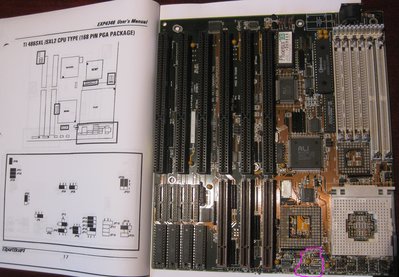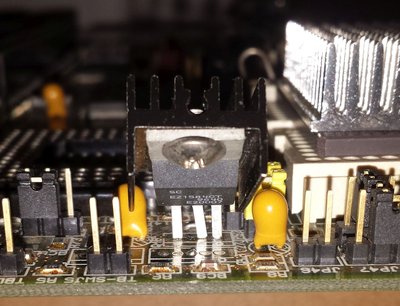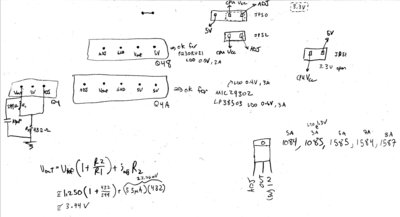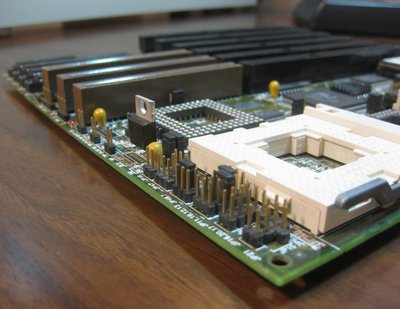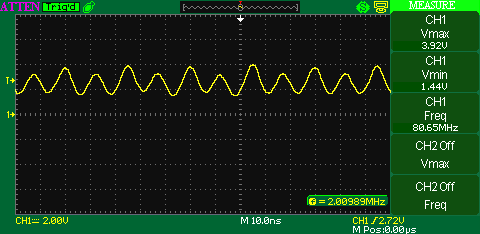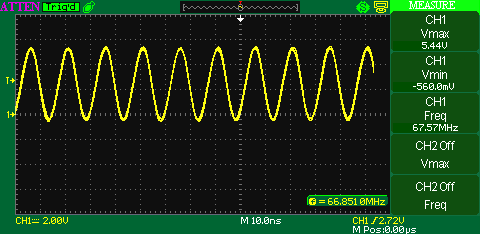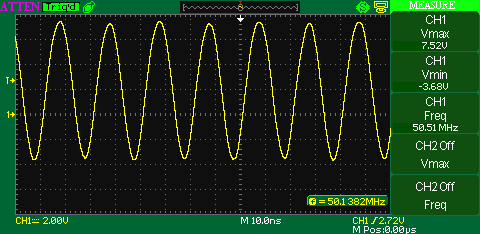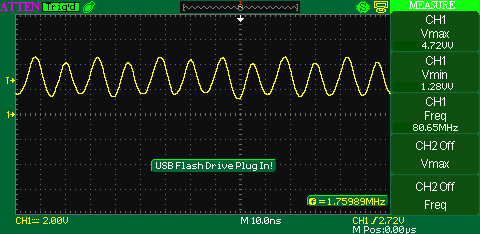As expected, shunting the 33 ohm resistor increased the voltage swing at 40 MHz (attached), however, this didn't resolve the underlying problem of operation at 40 MHz.
The board eventually stopped booting, even at 33 MHz. It now spits out Phoenix code 60, which according to the POST card is "Extended memory test". Prior to that, it was hung on a code which I looked up to be chipset register configuration, or something along those lines.
All along, the board would not let me enter the BIOS at power-on, e.g. hit DEL for Setup. It simply ignored my command. The only means in which I could enter the BIOS was if I previously had soft reset the system (at which point hitting DEL would enter Setup) or if I swapped out the BIOS chip for the AMI variant - let it checksum error, then put the Phoenix back in. A very odd issue I haven't encountered before. Before the board died, it was hanging on boot and loading default settings.
At the start of testing, the 3.6V PGA-168 SXL2-66 would at least POST, but over time, it wouldn't work at all. Only the 5V PGA-168/132 SXL's would work properly in the end, that is, to boot into Win3.11 and load IE5 w/google search page.
Even when I first tested the board, I tried 40 MHz, and it wouldn't boot. So from the onset, something was amiss. Based on warranty stickers with a google image search, I see that this board was offered with a SXL-40, so 40 MHz presumably was feasible. Were some of these ALi 1429G chipsets not qualified for 40 MHz, as was the case with some older CHIPS 386 chipsets? Seems that it would have the speed stamped on the chipset if that was the case.
I paid $60 for this board plus $18 shipping from Russia. It took 2+ months to arrive and I don't think it was wrapped in an anti-static bag. Item condition was only dashes -- with seller notes "not tested". Did I receive someone else's known lemon, or are all these boards wonky with 40 MHz and SCSI? Did the seller know he was selling a lemon? This is a question I've asked myself in the past when receiving faulty items. Looking at other items the seller has available, I see that some are "tested working" and others are "not tested". I have a feeling that "not tested" means "tested, not working, but don't want to scare off the buyers, so I'm omitting information"
Plan your life wisely, you'll be dead before you know it.
